|
|
 |
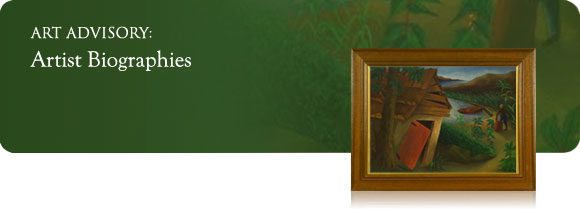
Alphabetical
A | B | C | D | E | F | G | H | I | J | K | L | M | N | O | P | Q | R | S | T | U | V | W | X | Y | Z
Wagner, Carl
Wallace, Carol A.
Webb, James
Wengenroth, Stow
Whiting, Henry W.
Whyte, Raymond A
|
Williams, Micah
Willis, Edmund Aylburton
Wilson, Richard
Wingen, Edmond
Witherington, William Frederick
Wollaston, John
|
|
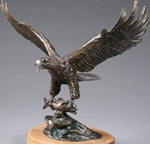
Carl Wagner
1938-2011
American bronze sculptor of wild animals
Carl Wagner was born in Glassboro, NJ in December of 1938. He first worked as a farmer and later and inventor, before turning to sculpture. Wagner moved to Colorado in the 1970s with the aim of opening his own foundry. With no formal art training, he began to create his own works. He traveled around the country with his wife, going to art festivals in attempts to sell his sculptures. Wagner worked in a 5,000 square foot foundry that he built near his home outside of Salida, designing and building all of his own machinery. His works ranged from thimbles and bronze mugs to life-size wild animals. Wagner was commissioned many times, mostly to create eagle sculptures for American companies. He passed away in 2011 in Naples, FL.
|
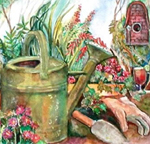
Carol A. Wallace
20/21st Century
Watercolorist
Carol Wallace began her art career as a gallery artist, represented by art galleries in Massachusetts, Connecticut, New York City, Pennsylvania, and North Carolina. Through the years she added to her repertoire by becoming a prolific commission artist, illustrator, and designer who licenses selected work to publishing companies and manufacturers of decorative giftware and fashion. She works in a variety of mediums (including watercolor, acrylic, and pen & ink) and depicts various subjects.
|
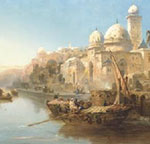
James Webb
1825-1895
British landscape and seascape painter
A British painter who specializes in marine views and landscapes. He was born in 1825 in Chelsea, London, where he remained until his death in 1895. Webb was a pupil of Clarkson Frederick Stanfield. His father, Archibald Webb, and his brother, Byron Webb, were also noted painters.
|
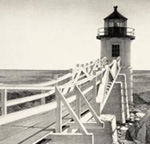
Stow Wengenroth
1906-1978
American artist and lithographer
Born in 1906 in Brooklyn, New York, Stow Wengenroth is considered to be one of the finest American lithographers of the 20th C. He studied at the Art Students League of NY and at the Grand Central School of Art. He was elected a member of the National Institute of Arts and Letters in 1942, and Associate of the National Academy of Design in 1938, and a full Academician in 1941. Wengenroth’s works are found in most major American collections including, the Library of Congress, The Whitney Museum of American Art, and the Metropolitan Museum of Art. He became well known for his detailed depictions of the seascapes and landscapes of New England, Maine in particular.
|
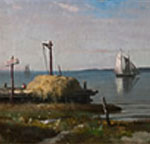
Henry W. Whiting
c.1905-1941
Early 20th Century American artist
Henry W. Whiting lived and worked in Pennsylvania. He is known for landscape and seascape paintings.
|
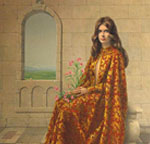
Raymond A. Whyte
1923-2002
American New Jersey affiliated Surrealist/Realist Painter
Known for his trompe l’oeil, still life, and portrait paintings, Whyte used his technique, craftsmanship, and color choices to create a mixture of realism and mysticism giving many of his works a dimension of eternity. He held over thirty solo exhibitions around the world.
|
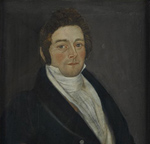
Micah Williams
1782-1837
Itinerate portrait painter who was active in New Brunswick, New Jersey and New York
Micah Williams, was known for painting naďve pastel portraits. As a portrait artist, principally in New Jersey, Micah Williams created the likenesses of residents in the area. His birthplace is not confirmed, but it is believed he was born about 1782 in the vicinity of Hempstead, New York. The first published reference of Williams was in the New Brunswick Advertiser in December 1806, when he married Margaret Priestly. Soon after that he and his brother-in-law, James Applegate Priestly, established a silver-plating business. They were successful for a time, until a combination of embargo acts and the War of 1812, led to a severe economic depression and their business collapsed. He was then jailed as an insolvent debtor. Upon his release in 1815, he managed to support his family as an itinerant artist of pastel portraits. The industrial revolution and the rising of a class of wealthy persons created a market for portrait painters. In his early years as a painter, Williams worked in the New Jersey counties of Middlesex, Monmouth, Bergen, Somerset, and Essex. Between the fall of 1818 to 1821, he produced over sixty portraits of Monmouth County residents. His method was to stretch a sheet of pastel paper on a sheet of newspaper and then attach the layers to a wooden stretcher, usually of white pine and fastened at the corners with half-lap joints. This method proved practical because he could prop his work against pieces of furniture, which negated his having to carry an easel. Also, this proved an advantage later to art historians because the dates of the newspapers documented the time the portraits were completed. Many of his paintings had monochromatic backgrounds, but some had landscapes with trees and grassy hills and others showed interiors with elegant draperies and architectural moldings. In 1828, Micah Williams and his family moved to New York City, where he learned to paint in oils. About fifteen oil portraits survive from this time period, but he also continued to make pastel portraits. In 1832, the Williams family returned to New Brunswick, where he did pastel portraits for three more years. These works show a sophistication lacking in his pre-New York period, indicating he likely studied with a professional artist in the city. But that person has not been identified. Williams appears to have stopped painting in 1835, and he died in November of 1837. His wife lived until 1863, and his talents seemed forgotten until the mid 20th century when new discoveries led to their study and appreciation, especially by the scholars Irwin F. Cortelyou and Bernadette M. Rogoff.
|
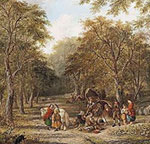
Edmund Aylburton Willis
1809-1899
American/British painter
Born in England in 1809 and already had a reputation as an artist when he came to America in 1831. His best-known pictures are “The Prairie Fire” and “The Long Sleep.” He was a member of the Brooklyn Art Society. His father was John A. Willis, a well-known English artist, and his brother, Henry Burton Willis, was a Fellow of the Royal Watercolor Society. He died on Friday, Feb 3, 1899.
|
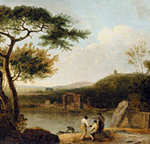
Richard Wilson
1713-1782
Welsh landscape and portrait painter
Richard Wilson, was an influential Welsh landscape painter who worked in Britain and Italy. Along with George Lambert, Wilson is recognized as a pioneer in the British art of landscape and was described in the Welsh Academy Encyclopedia of Wales as the "most distinguished painter Wales has ever produced and the first to appreciate the aesthetic possibilities of his country". In December 1768 Wilson became one of the founding members of the Royal Academy. His landscapes were acknowledged as an influence by Constable, John Crome and Turner. Wilson died in Colomendy, Denbighshire on 15 May 1782 and is buried in the grounds of St. Mary’s Church, Mold, Flintshire, UK.
|
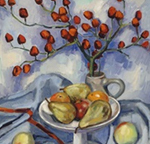
Edmond Wingen
1906-1970
Dutch painter
Edmond Wingen was born in Maastricht in September
1906, where he lived and worked until 1936 when he moved to The Hague.
He studied at the Koninklijke School in Den Bosch and the Middelbare
Kunstnijverheidsschool in Maastricht and later studied at the art academies
in Antwerp and Dusseldorf. Wingen specialized in portraits, still lifes, and
landscapes. His work is included in the Gemeentemuseum Den Haag. The
artist died in 1970.
|
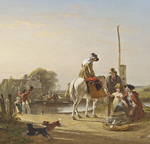
William Frederick Witherington
1785-1865
British landscape and figure painter
William Frederick Witherington was an English painter and academic born in London in 1785. He enrolled at the Royal Academy Schools in 1805. Witherington exhibited every year, with one exception, at the Royal Academy from 1811 until his death in 1865. He was elected A.R.A. on November 1, 1830 and R.A. on February 10, 1840, retiring as an academician in 1863. Witheringotn’s eary works were mostly landscapes, but the influence of other artists, like George Morland, can be seen in the figurative elements of his paintings. He enjoyed painting English scenery, and never travelled abroad to paint. He does not depict the harsh realities of rural life, but rather records the incidents of family life. Similar to his contemporary, Augustus Wall Callcott, RA, he creates a composition with a lively foreground of figures and animals, combined with a landscape with distant vistas glimpsed through the wood.
|
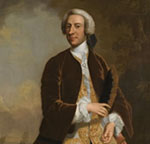
John Wollaston
1710-1775
British/American portrait artist
John Wollaston was born in London, the son of a painter.
Little is know of his formal artistic training but on his arrival in New York in 1749, he had developed a personal style of portrait painting that introduced the latest most fashionable of London styles to his patrons in the colonies. He travelled through the south and to Philadelphia and returned to London, May 1767.
|
| |
|
| |
|
|


